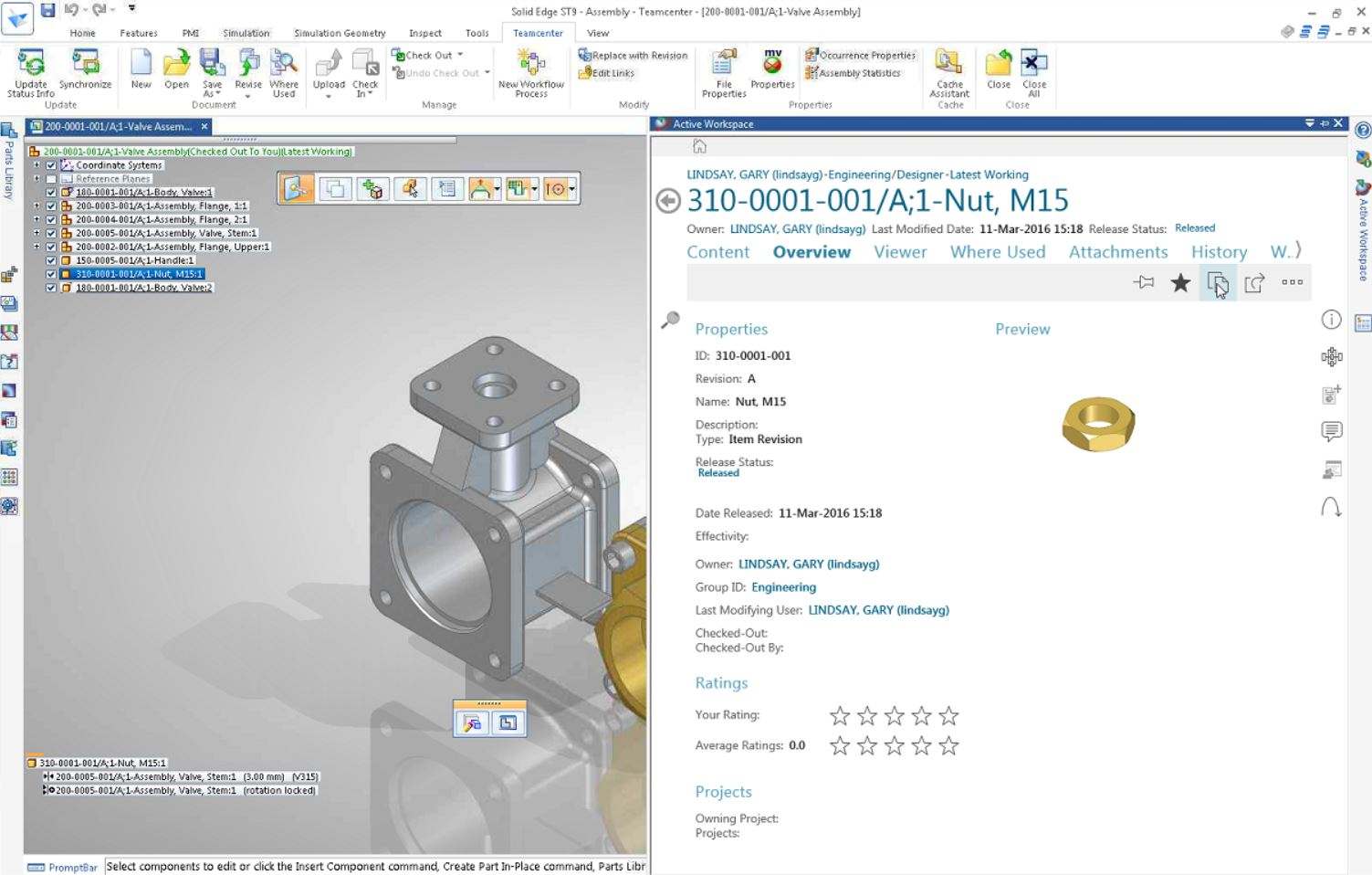Reasons to be cheerful (about PDM)

I just returned from PLM Connection 2016, an annual user event for Siemens PLM Sof tware customers that was held in Orlando, Florida. It was a great opportunity to discuss some of the new data management capabilities we are adding in Solid Edge ST9 with our customers, industry analysts and journalists, and also to attend several presentations about how our customers are using product data management (PDM) to achieve real benefits for their businesses. I came back from the event totally excited and enthused – our customers are doing amazing things with PDM!
tware customers that was held in Orlando, Florida. It was a great opportunity to discuss some of the new data management capabilities we are adding in Solid Edge ST9 with our customers, industry analysts and journalists, and also to attend several presentations about how our customers are using product data management (PDM) to achieve real benefits for their businesses. I came back from the event totally excited and enthused – our customers are doing amazing things with PDM!
As I opened my email the next day I read a quote from a blogger that said “I‘ve spoken with hundreds of CAD users, and I can say this with certainty: everyone hates PDM.“ The blogger possibly had an agenda to be negative about PDM, but it’s clear to me they have their head in the sand about how PDM is helping designers today. It would be easy to chuckle and move on, but having just seen at first hand some great examples of PDM in action I feel compelled to refute this negativity.
So what is the truth? Clearly the users I spoke with at PLM Connection do not “hate PDM.“ They see it as a necessary solution for managing growing volumes of design data, but more than that they see it as hugely positive contributor to how they develop high quality products, meet their customer’s needs and improve their profitability.
There are so many positive examples I could give you from our customer event, maybe the engineers from Boeing who demonstrated how they are using PDM to support the design and visualization of Chinook helicopters, or the designers from Applied Materials who showed how they are using PDM to support the design of semiconductor machinery across globally distrubuted design teams. Another presentation that clearly demonstrated the value of PDM was from Eli Fayzenberg from SNC-Lavalin in Canada. They design huge robots with thousands of components that are used to maintain and extend the life of nuclear power plants. Their main CAD solution is Solid Edge, but a lot of their suppliers use other CAD software including SolidWorks. PDM (Teamcenter in this case, closely integrated with Solid Edge) enables them to work efficiently in this multi-CAD environment. Assemblies are designed using Solid Edge but they can easily insert and edit components originaly designed in SolidWorks. A key point that Eli made was that without PDM their designers would be wasting hundreds of man hours translating CAD files and trying to keep up with design changes in the externally supplied parts. You can read a full case study on our website and see if you agree with me that engineers at SNC-Lavalin clearly “like” their PDM system.
 Designers at SNC-Lavalin use PDM to manage multi-CAD data and speed the design of complex machinery
Designers at SNC-Lavalin use PDM to manage multi-CAD data and speed the design of complex machinery
I also learned of a pump manufacturer who is using PDM to provide an online catalog of all their spare parts. As finding and purchasing parts was difficult for their end-user customers, they were going elesewhere to search for and order the replacement parts they needed. Now their customers have easy access to an online spare parts catalog, and the pump manufacturer is increasing their turnover and profitability.
Maybe the “hate PDM“ comment was more from the persepctive of a designer trying to complete everyday tasks such as finding the parts they need quickly or managing engineering changes. The good news here is that PDM gets better at this every year. For example in Solid Edge ST9 we are adding new built-in data management capabilites that provide almost instant searches for data, and tools that enable revision and release processes to be completed in just a few mouse clicks. One criticism of PDM in the past was that it was too hard to install and maintain. These new built-in capabilities are very straightforward for existing Solid Edge users to leverage – you basically run an indexer on the folders where you store your CAD files. And there is no database software to maintain – you’ve got to love that! (watch the video).
For Solid Edge customers using Teamcenter like SNC-Lavalin, an excellent new aid for speeding design projects is a direct interface to Teamcenter Active Workspace, a streamlined interface to an organization’s design data and processes. I was able to get some hands-on time with Active Workspace at the event and was really impressed by the intuitive search capabilities. Do you “hate“ searching for what you need on Amazon.com? I quite enjoy it. Those same ideas of filtered searches, ratings and graphical previews are right there in Teamcenter Active Workspace. For CAD designers, detailed product and process data at your fingertips is essential. Need to find the exact specification of that machine you delivered to a customer two years ago? Its right there. Need to know which assemblies a part that you have been asked to modify is used on, and if it’s being referenced in a currently open ECR or ECO? That information is there too.
 Streamlined access to data and processes – Teamcenter Active Workspace is now embedded in Solid Edge
Streamlined access to data and processes – Teamcenter Active Workspace is now embedded in Solid Edge
So are you with the enthusiasm and success of the users I met with at PLM Connection, or the doom and gloom scenario of the blogger? It’s great to see that our customers are taking a positive approach and are in the first category. The choice is yours – let us know what you think!


